Originally published at: Most Dangerous Countries for Women 2023 | GoVisaFree
As a woman, safety is a fundamental concern in every aspect of life, especially when traveling. Unfortunately, not all countries provide a secure environment for women. The world is a diverse place, and while some nations are peaceful and welcoming, others are notoriously dangerous for women.
If you’re planning a trip or moving abroad, you need to be aware of the risks that you may face as a woman in different parts of the world. The most dangerous countries for women are those where gender-based violence is rampant, laws fail to protect women, and cultural and social norms promote gender inequality.
From the war-torn Middle East to the tropical paradises of the Caribbean, the dangers that women face vary from place to place. Some countries have high rates of domestic violence and sexual assault, while others have a prevalent culture of misogyny and sexism.
This article aims to shed light on the most dangerous countries for women, the reasons behind their precarious status, and what you can do to stay safe if you find yourself in one of these places. Whether you’re a solo traveler or moving abroad, this information will come in handy in the future. Let’s delve into the world’s most dangerous places for women and explore what makes them so treacherous.
10 Most Dangerous Countries for Women

 Sierra Leone
Sierra Leone
Sierra Leone is a small country located in West Africa, known for its stunning beaches, national parks, and vibrant culture.
Despite its natural beauty, Sierra Leone has a reputation for being one of the most dangerous countries in the world for women. Gender-based violence is pervasive, with high rates of rape, domestic violence, and female genital mutilation. Women are often subject to cultural and social norms that reinforce gender inequality, such as forced marriage and restricted access to education.
One reason for Sierra Leone’s precarious status is its history of civil conflict. The country endured a devastating civil war from 1991 to 2002, which left a legacy of violence and instability. Women were targeted during the conflict, with widespread reports of rape and sexual violence. While the war officially ended in 2002, the effects are still felt today, with a fragile political and economic situation exacerbating gender-based violence.
Another factor contributing to Sierra Leone’s dangerousness for women is the lack of legal protections. The country has laws criminalizing domestic violence, rape, and other forms of gender-based violence, but enforcement is weak, and cultural norms often prevent women from reporting such crimes. Many women also lack access to medical and legal resources, making it hard to seek justice or receive support after experiencing violence.
Sierra Leone’s precarious status for women is a complex issue that requires sustained attention and action. While efforts are underway to address gender-based violence and promote women’s rights, much work remains to be done. It’s vital to be aware of the risks and take precautions for women traveling to Sierra Leone.

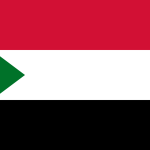 Sudan
Sudan
Sudan is a large country in Northeast Africa, known for its diverse landscapes, rich history, and cultural heritage.
Sudan has a notorious reputation as one of the most dangerous countries in the world for women. Gender-based violence is widespread, with high rates of rape, domestic violence, and forced marriage. Women also face discrimination and unequal access to education, healthcare, and employment opportunities.
One of the main reasons for Sudan’s precarious status for women is its ongoing conflicts and political instability. The country has experienced decades of conflict, including the Darfur conflict, which has resulted in widespread human rights abuses and violence against women. Women are targeted during times of conflict and displacement, with reports of rape and sexual violence as weapons of war.
Another factor contributing to Sudan’s danger for women is the lack of legal protections and enforcement. While the country has laws criminalizing gender-based violence, these laws are not always enforced, and cultural norms often prevent women from seeking justice. Many women also lack access to medical and legal resources, making it difficult to report crimes or receive support after experiencing violence.
Women planning to visit Sudan should take necessary precautions and be aware of the potential risks they may face. It’s also crucial to support local organizations and initiatives that are working to empower women and advocate for gender equality in the country.

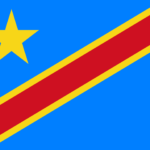 Democratic Republic of Congo
Democratic Republic of Congo
The Democratic Republic of Congo (DRC), a country located in Central Africa, is known for its diverse wildlife, vibrant culture, and tumultuous history.
Although it has great tourism potential, the DRC has unfortunately been plagued by political unrest, armed conflict, and extreme poverty for decades, which has had a devastating impact on the country’s people, especially women.
The DRC has one of the highest rates of sexual violence against women worldwide, with reports of rape, forced marriage, and other forms of gender-based violence being widespread. Women and girls are often used as weapons of war, and militias target them to instill fear and exert control over communities. The lack of impactful legal and justice systems exacerbates the situation, as perpetrators are rarely held accountable for their actions.
The prevalence of sexual violence in the DRC has led to a culture of impunity, where perpetrators feel they can get away with their crimes. Women are afraid to report incidents of violence, fearing retribution from their attackers or their communities. The stigmatization and shame associated with sexual violence further discourage victims from speaking out.
When venturing to the Democratic Republic of Congo, women should take vital precautions to ensure their safety, including avoiding solitary travel at night and maintaining awareness of their surroundings at all times. Additionally, it is crucial to back local organizations that are committed to preserving women’s rights and providing aid to those who have experienced gender-based violence. By lending support to these groups, we can work together to establish a more just and secure atmosphere for women in the DRC.

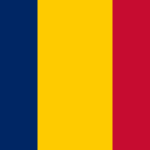 Chad
Chad
Chad is a landlocked country in Central Africa that boasts diverse cultures and an abundance of wildlife.
Despite its natural beauty, Chad is considered one of the most dangerous countries for women. Women in Chad face widespread gender-based violence and lack adequate legal protections. The country sees high rates of child marriage, female genital mutilation, and forced labor.
The prevalence of gender-based violence in Chad is attributed to deep-rooted cultural and social norms that promote gender inequality. Women are often viewed as inferior to men and subjected to various forms of abuse, including physical, sexual, and emotional violence. The lack of access to education and healthcare exacerbates the situation for women, making them more vulnerable to exploitation.

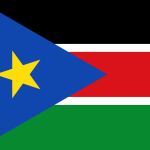 South Sudan
South Sudan
South Sudan, the youngest country in the world, is a North African country that gained independence from Sudan in 2011.
Although South Sudan has gained independence from Sudan, the country’s history of conflict and violence has continued to plague the nation, resulting in a severe lack of development and constant instability. Located in the Horn of Africa, South Sudan is home to diverse ethnic communities, each with its unique cultural traditions.
Women in South Sudan face numerous challenges, including gender-based violence, limited access to education and healthcare, and harmful cultural practices such as female genital mutilation. The ongoing conflict and displacement have exacerbated these issues, leaving women at an even greater risk of violence and exploitation.
Furthermore, South Sudan has one of the highest maternal mortality rates in the world, with women facing significant risks during pregnancy and childbirth. The lack of adequate healthcare facilities and skilled personnel is a significant contributor to this issue.
As travelers, it’s crucial to exercise caution when visiting South Sudan, particularly as a woman. Taking necessary precautions and being aware of the risks can help ensure a safe and enjoyable experience.

 Iraq
Iraq
Iraq is a Middle Eastern country with a rich history and diverse culture, yet it has been stirred by conflict and violence for decades.
Iraq’s population is primarily Arab, but there are also significant Kurdish and Turkmen populations. The official language is Arabic, and Islam is the dominant religion.
Unfortunately, Iraq is also one of the most dangerous countries for women. The country’s patriarchal society and ongoing conflicts have led to widespread gender-based violence, including rape, sexual harassment, and domestic abuse. In addition, women are often subject to restrictive laws and social norms that limit their freedoms and opportunities.
The ongoing conflict in Iraq has only worsened the situation for women, with many forced to flee their homes and become refugees. Displaced women and girls are particularly vulnerable to exploitation and abuse, including forced marriage, trafficking, and sexual violence.

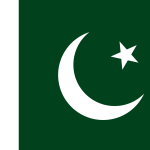 Pakistan
Pakistan
Pakistan is a country located in South Asia with a population of over 230 million people. Its official language is Urdu, and its capital city is Islamabad
Known for its prosperous history, Pakistan has unfortunately also gained a reputation as one of the most dangerous countries for women.
In Pakistan, women face numerous challenges in their daily lives, including domestic violence, forced marriages, and honor killings. According to the Human Rights Commission of Pakistan, over 1,000 women were killed in “honor” crimes in 2020 alone. Women also face discrimination in education and employment opportunities, with lower literacy rates and limited access to the job market.
Furthermore, sexual harassment and assault are common occurrences in Pakistan. Women who report these crimes often face stigma and are not taken seriously by authorities. The government has also been criticized for failing to take crucial measures to address these issues and provide adequate protection for women.
To combat the said challenges, local organizations such as the Aurat Foundation in Pakistan have been working tirelessly to advocate for women’s rights and provide support to survivors of gender-based violence.

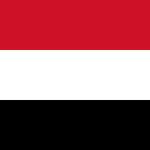 Yemen
Yemen
Located in the Middle East, Yemen is one of the most impoverished and conflict-ridden countries in the world
Yemen has been affected by instability and civil war since 2015, leading to a devastating humanitarian crisis. Women in Yemen face various challenges due to ongoing conflict, including gender-based violence, child marriage, and limited access to healthcare and education.
One of the main reasons why Yemen is one of the most dangerous countries for women is the prevalence of child marriage. According to UNICEF, around 32% of Yemeni girls are married before the age of 18, while 9% are married before the age of 15. Child marriage not only puts young girls at risk of physical and sexual violence but also deprives them of their education and future opportunities.
Women in Yemen also face high rates of domestic violence and sexual assault, with little to no protection from the law. Furthermore, the ongoing conflict has resulted in a breakdown of social services, leaving many women without access to healthcare and education. The lack of resources and support for women’s rights activists and organizations also makes it difficult to address and combat these issues.
In order to improve the situation for women in Yemen, it is crucial to address the underlying causes of the conflict and work toward a peaceful resolution. Supporting and empowering women’s rights activists and organizations can also help provide necessary resources and services to women in need.

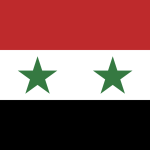 Syria
Syria
Syria is a Middle Eastern country known for its rich history and culture. However, for the past decade, the country has been in the midst of a devastating civil war, leading to widespread violence and instability.
The ongoing conflict in Syria has led to a breakdown of law and order, leaving women vulnerable to various forms of abuse and exploitation.
The Syrian conflict has resulted in the displacement of millions of people, including women and children, subjected to gender-based violence in the form of rape, forced marriage, and trafficking. Women who have fled to refugee camps or other areas of displacement are also at risk of sexual exploitation and trafficking.
In addition to the impact of the conflict, Syria’s patriarchal society and conservative cultural norms have also contributed to the marginalization and discrimination of women. Women are frequently denied their rights to education and employment, and their participation in decision-making processes is limited.
Victims of gender-based violence or abuse face significant barriers in seeking justice and protection due to the breakdown of the rule of law and the lack of impactful legal mechanisms. The ongoing conflict has also led to the weakening of institutions responsible for upholding women’s rights, including law enforcement and the judiciary.
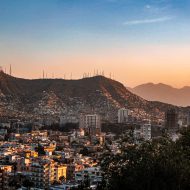
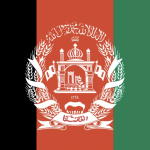 Afghanistan
Afghanistan
Afghanistan is a landlocked country located in South Asia, bordered by Pakistan to the east and south, Iran to the west, Turkmenistan, Uzbekistan, and Tajikistan to the north.
With a population of around 38 million people, Afghanistan is a country with a complex history and culture, marked by years of conflict and violence.
Unfortunately, Afghanistan is one of the most dangerous countries in the world for women. The Taliban’s rise to power and the subsequent wars have resulted in the subjugation of women, with women’s rights being severely restricted. Women are often subjected to violence, forced marriages, and have limited access to education and healthcare. In addition, women face significant challenges in participating in the public and political spheres, with many women facing discrimination and intimidation if they attempt to speak out or engage in political activism.
Despite these challenges, many women in Afghanistan continue to fight for their rights and have made significant strides toward gender equality. Women-led organizations and activists have been working to increase access to education, healthcare, and economic opportunities for women. However, progress has been slow, and the situation remains precarious for women in Afghanistan.
The situation for women in Afghanistan is dire, with women facing significant challenges to their safety, rights, and participation in society. However, the resilience and bravery of Afghan women cannot be underestimated, and there is hope that with continued support and advocacy, progress toward gender equality can be made.
Factors That Make a Country Dangerous for Women
- Patriarchal cultural norms that prioritize men over women and perpetuate gender-based violence
- Weak legal frameworks that fail to protect women and provide justice for victims of gender-based violence
- Widespread poverty, which can force women into risky situations such as early marriage or sex work
- Political instability, which can lead to an increase in violence and exploitation
- Prevalence of armed conflict, which can result in sexual violence being used as a weapon of war
- Inadequate access to education and healthcare, leaving women vulnerable to abuse and prevent them from seeking help
- Lack of economic opportunities, which can lead to financial dependence on men and increase vulnerability to exploitation
- Discrimination against marginalized groups, such as ethnic or religious minorities, which can exacerbate the risks faced by women within these communities
- Limited representation of women in political and decision-making roles, perpetuating unequal power dynamics and prevent progress toward gender equality
- Systemic corruption that allows perpetrators of gender-based violence to go unpunished and hinders efforts to improve women’s rights.
Ten Safest Countries for Women
Rank |
Country |
Index Score |
1 |
Norway |
922 |
2 |
Finland |
909 |
3 |
Iceland |
907 |
4. |
Denmark |
903 |
5 |
Luxembourg |
899 |
6 |
Switzerland |
898 |
7 |
Sweden |
895 |
8 |
Austria |
891 |
9 |
The United Kingdom |
888 |
10 |
The Netherlands |
885 |
Tips to Stay Safe While Traveling Alone as a Woman
Here are some tips to help you stay safe while traveling or living abroad alone as a woman:
🌍 1# Research your destination
Before traveling or moving to a new country, research its culture, customs, and laws. Doing so will help you prepare for cultural differences and potential safety risks.
🏡 2# Choose safe accommodations
Choose a reputable hotel or hostel in a safe area. If you’re renting an apartment, make sure it’s located in a safe neighborhood and has proper security measures.
📱 3# Stay connected
Keep someone back home informed of your travel plans and check in with them regularly. It’s also a good idea to have a local contact in case of an emergency.
🚎 4# Avoid traveling at night
If possible, avoid traveling alone at night. Stick to well-lit and busy streets and take public transportation or reputable taxis.
👗 5# Dress appropriately
Dressing modestly and blending in with the local culture can help you avoid unwanted attention. Avoid wearing flashy jewelry or carrying expensive electronics.
🎯 6# Trust your instincts
If a situation feels unsafe or uncomfortable, trust your instincts and remove yourself from it. It’s better to be cautious and avoid potential risks.
🥋 7# Learn basic self-defense
Consider taking a self-defense class before traveling or moving abroad. Knowing how to defend yourself can boost your confidence and help you feel more prepared.
Remember, it’s always better to be over-prepared than under-prepared when it comes to safety. Taking the steps above can help ensure a safer and more enjoyable experience while traveling or living abroad alone as a woman.